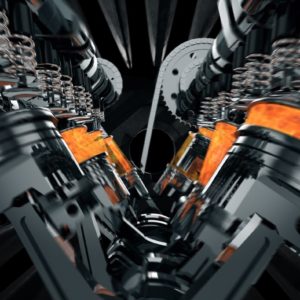Engines contain cylinders that convert fuel into mechanical energy. Combustion within the cylinders fire at the right time to maximize the power they generate.
When the engine’s 6th cylinder suffers a misfire, a code P0306 is stored.
What Does the P0306 Code Mean?
Diagnostic trouble code (DTC) stands for “Cylinder 6 Misfire Detected.” This code is stored by your car’s primary computer—commonly known as the powertrain control module or PCM— when it detects that cylinder #6 did not ignite properly.
Cylinder number 6 would refer, not to the sixth cylinder in the firing order, but the cylinder numbered “6” in the arrangement of cylinders on the engine. You can learn more in our discussion about cylinder location and firing order.
About Misfires
A misfire is caused either by incomplete combustion or the absence of combustion in one cylinder. Combustion is a small explosion that takes place when a pressurized air-fuel mixture is ignited inside the combustion chamber above each piston, and these explosions are timed very precisely for optimum power and efficiency.

The combustion event superheats the inert nitrogen (which is 78% of the air charge) and the superheated nitrogen expands to drive the piston downward, which, applies torque by way of the connecting rods to the crankshaft, creating the rotational force delivered to the transmission or transaxle, which applies torque to the drive wheels. When a cylinder misfires, the crankshaft slows just a bit because the cylinder’s combustion event either didn’t take place or was weak more than the set number of times during the 200 or 1000 rpm window and the ECM/PCM detects it, then flags a misfire code on that cylinder.
For an in-depth look at misfires, read our technical discussion about how the engine computer identifies which cylinder is misfiring.
What are the Possible Causes of the P0306 Code?
A cylinder can suffer a misfire for various reasons. The common causes for a code P0306 include:
- Worn-out ignition system parts (i.e., spark plugs, ignition wires, coils, or distributor cap)
- Vacuum leaks
- Insufficient fuel pressure
- Problem with the fuel pump, fuel pump relay, fuel injectors, or fuel filter
- Problems with the exhaust gas circulation (EGR) system
- Bad or failing mass airflow sensor
- Bad or failing crankshaft sensor
- Bad or failing camshaft sensor
- Bad or failing throttle position sensor
- Mechanical engine issues (e.g., low compression, leaky head gaskets, or malfunctioning engine valves)

What are the Common Symptoms of the P0306 code?
When the PCM identifies a cylinder #6 misfire, it activates the Check Engine Light on your car’s dash. This is a standard warning for any problem involving the engine.
Other symptoms that may accompany a P0306 include the following:
- No symptom at all except a check engine light.
- Slow/sluggish acceleration
- Car jerks forward during acceleration
- Engine stalls when the car comes to a stop
- Rough idling
- Engine misfiring
- Reduced fuel economy
How to Diagnose the P0306 Code
Figuring out exactly what triggered the P0306 code in your car can be tricky due to the number of possible causes. For more information about how to diagnose fault code P0306, see the video below:
How to Fix the P0306 Code
Like most OBD-II codes, there’s no one-size-fits-all solution that will magically clear the P0306 code—which is why some people find it easier to just leave the job to their mechanics. But if you’re confident with your DIY skills, start by doing some research on car forums and other similar platforms.
Keep in mind that what worked for someone else may not work for you, so make sure to check if the P0306 repair you are looking at worked for someone with your exact vehicle. Stick to the successful repairs (for the same code and the same underlying cause) that other car owners with the same vehicle have reported.
Also, if you want to fix your car right the first time, we recommend that you consult the appropriate repair information for your application. Make use of online auto repair resources and guides or get yourself an ALLDATA subscription, which provides information that is specific to your car.
This should help you with this and other future fixes you may need to carry out the next time your ride breaks down.
Get High-Quality Ignition System Parts for Your Ride
Your ignition system parts (spark plugs, ignition wires, coils, etc.) all play crucial roles in the operation of your vehicle. Once these components fail, you may observe symptoms like sluggish acceleration, rough idling, and engine misfires. Luckily, issues like these can be solved by simply replacing your faulty ignition parts.
Here at CarParts.com, you can get top-notch ignition system components for your ride using your mobile phone. All you have to do is access our website and input your vehicle’s exact details into our easy-to-use vehicle selector. Choose from our selection of ignition system parts sourced from top brands in the industry.
Worried about your budget? All our replacement parts come with a low-price guarantee! You won’t have to break the bank just to get your vehicle back on the road again. We also have distribution centers located across the country, so expect your orders to reach you in just a few days.
Take a look at our selection of parts now and order what you need today!
Fix a P0306 Code With New Components
A P0306 code might only mean a misfire was detected in one engine cylinder, which might seem like a minor issue. However, you should resolve this issue because trouble codes are meant to warn you before problems worsen. The last thing you want is for a minor issue to turn into expensive engine damage. Luckily, getting the right parts to fix this problem won’t take long, nor will it break the bank, thanks to CarParts.com.
CarParts.com offers a wide selection of engine components and sensors that can fix a P0306 code. These include new spark plugs, mass air flow sensors, and crankshaft position sensors. We only source our products from established brands, so you can be confident that they’ve met stringent quality control standards. We also have distribution centers in strategic locations throughout the US, so you can get new components quickly.
Don’t let faulty engine components lead to expensive repairs. Browse our selection of high-quality spark plugs, mass air flow sensors, and crankshaft position sensors today!
Products Mentioned in this Guide
Any information provided on this Website is for informational purposes only and is not intended to replace consultation with a professional mechanic. The accuracy and timeliness of the information may change from the time of publication.


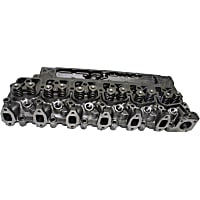 Cylinder Head
Cylinder Head
 Spark Plug
Spark Plug
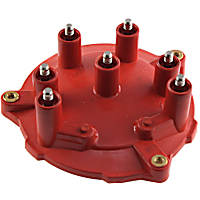 Distributor Cap
Distributor Cap
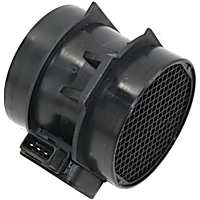 Mass Air Flow Sensor
Mass Air Flow Sensor
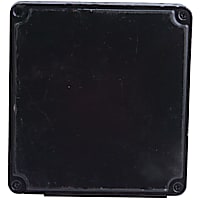 Engine Control Module
Engine Control Module


